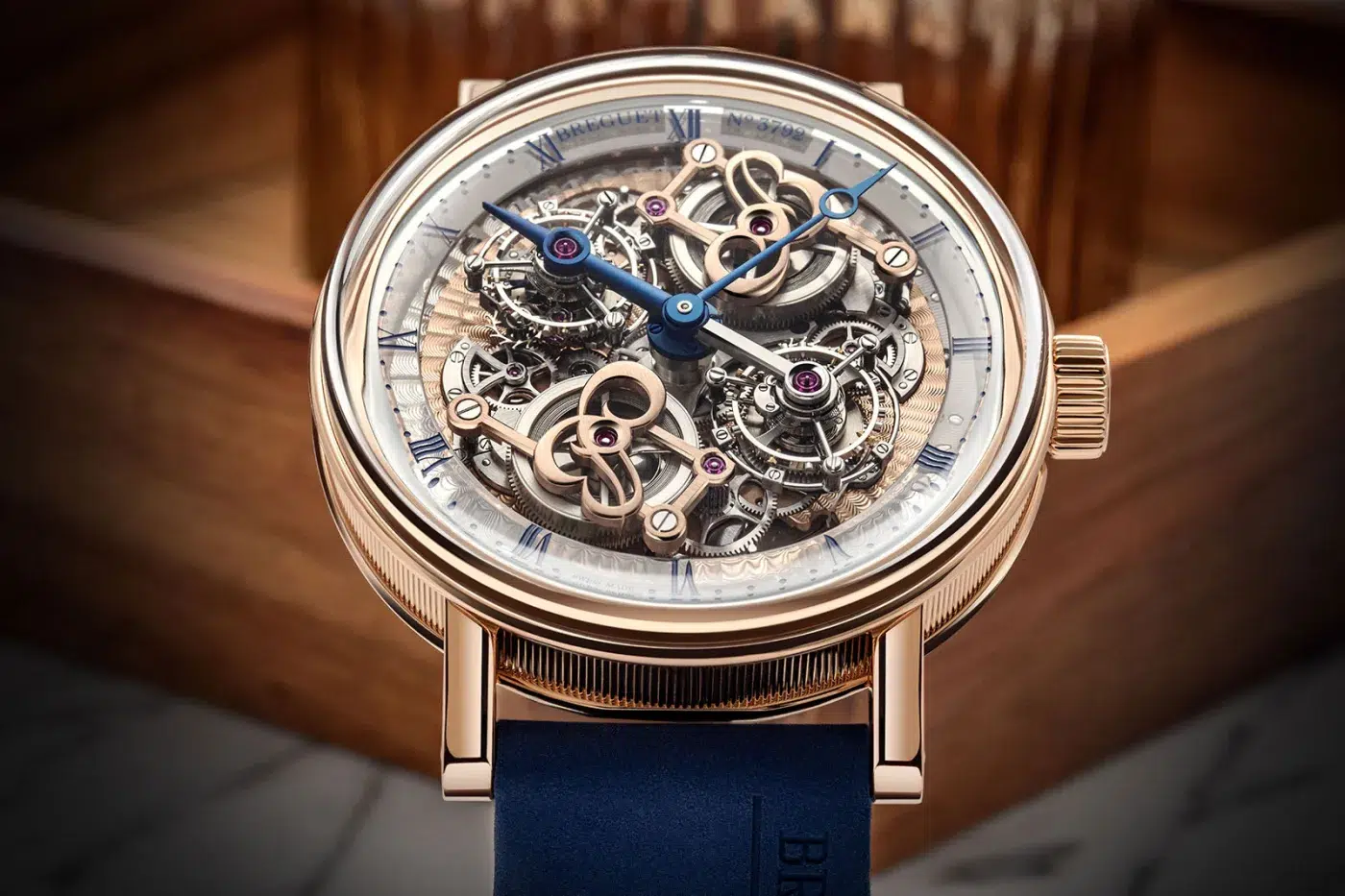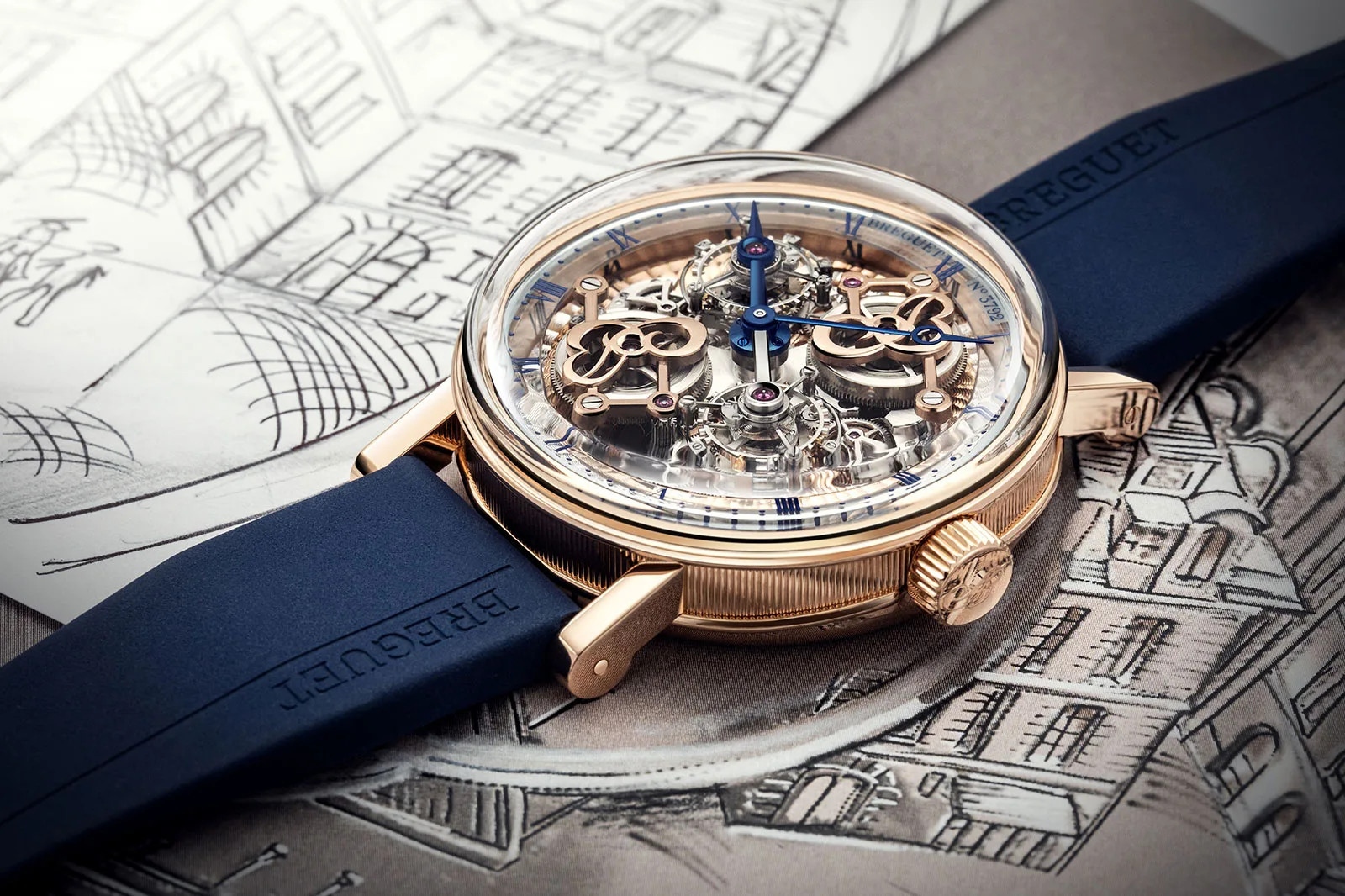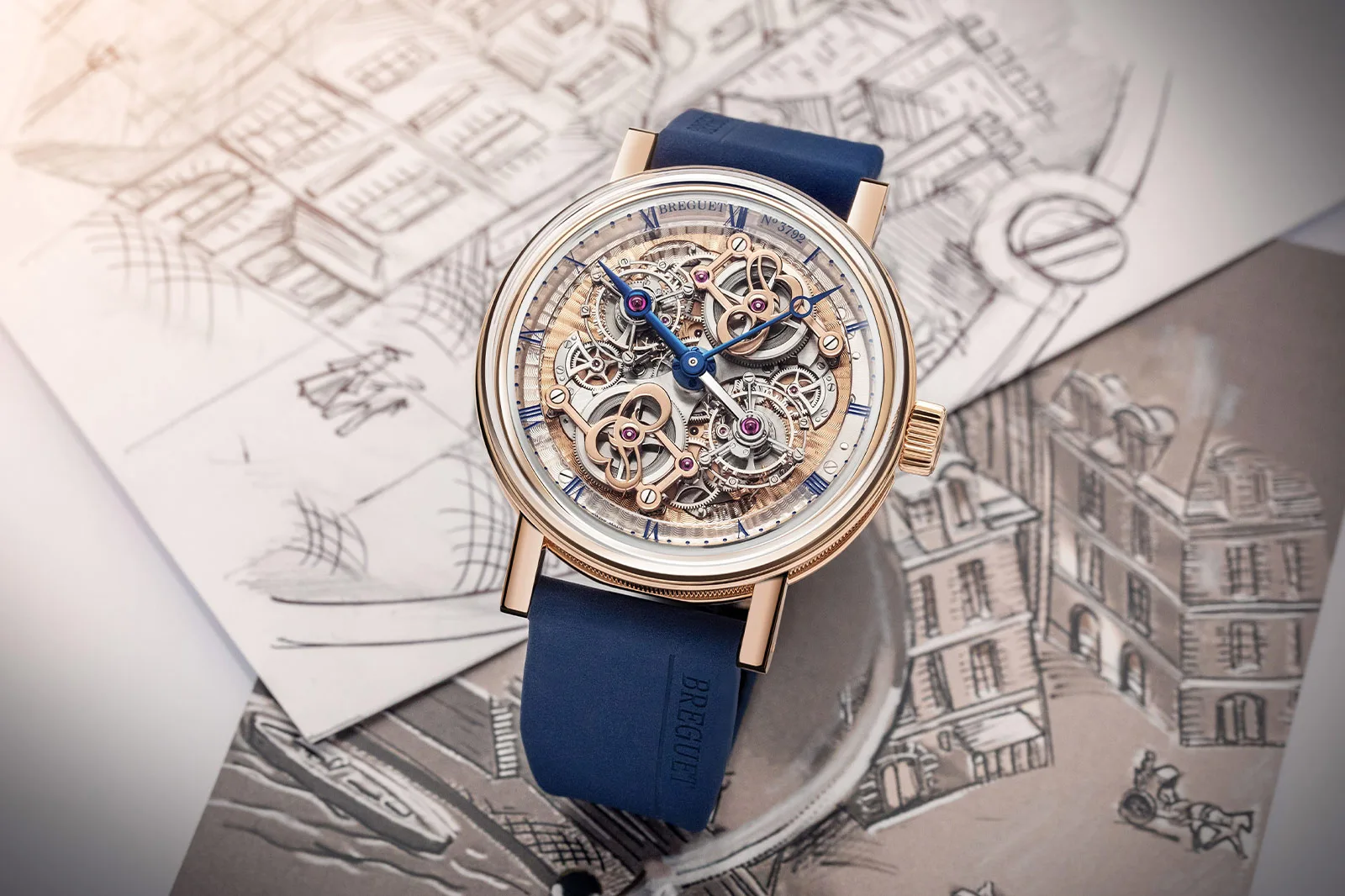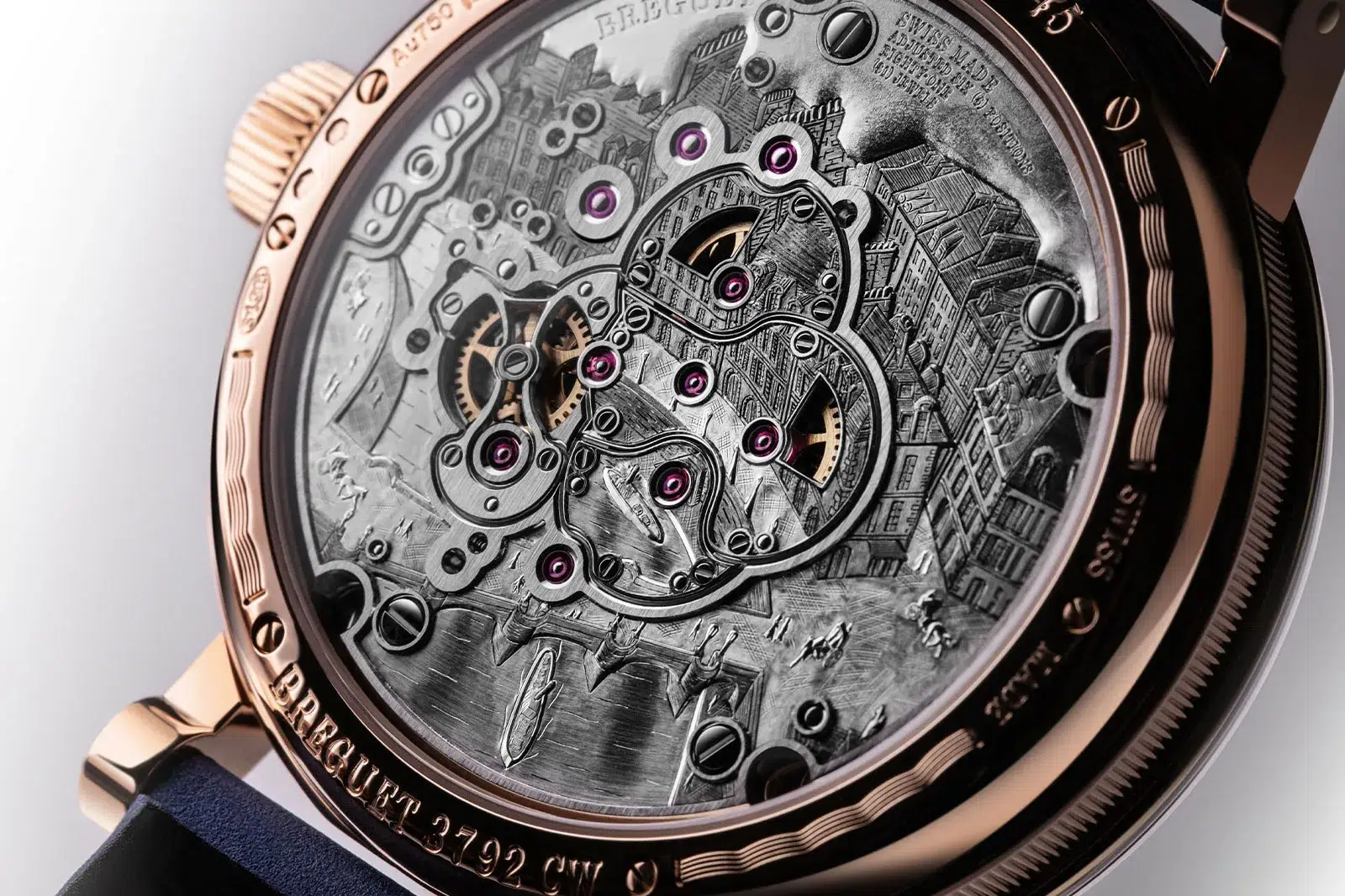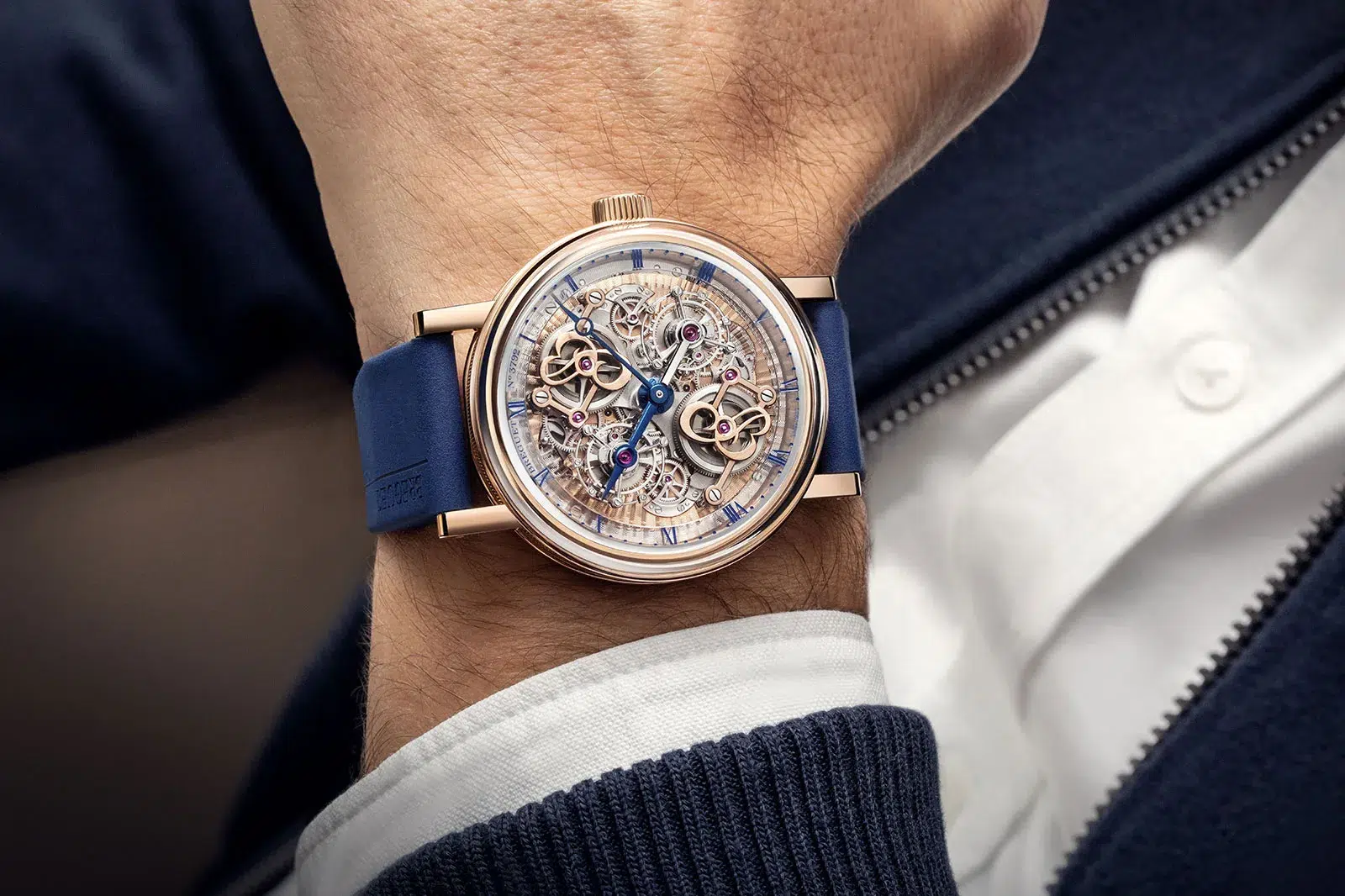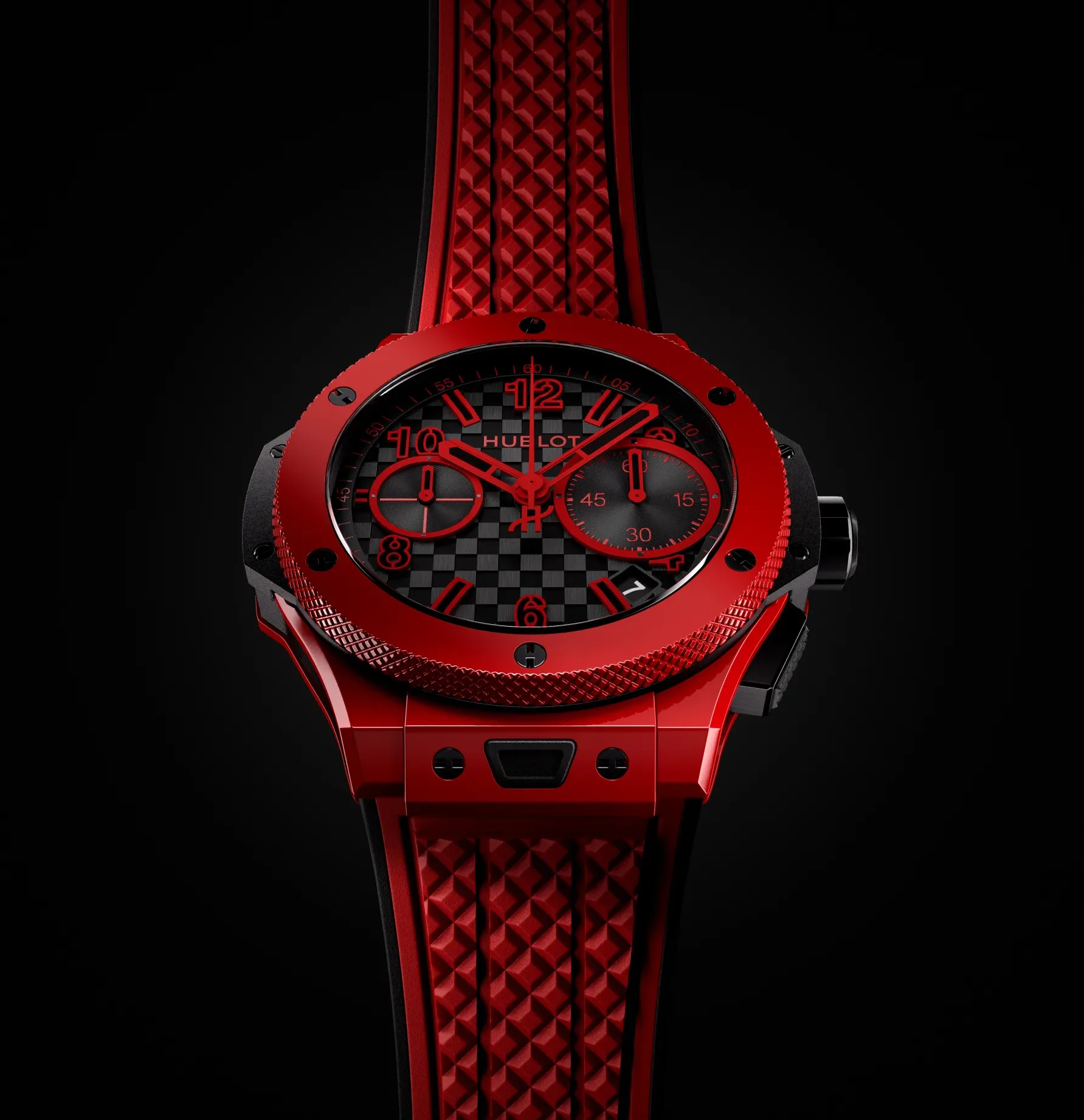BY HARLAN CHAPMAN-GREEN
It’s a little-known fact about me that my all-time favourite watchmaker is Breguet. I mean, I’ve literally never ever said that before on this website ever, it’s basically a reveal party at this point. But when the news broke the other day that Breguet has updated its version of my favourite watch of all time, well, you’d better believe there was a party somewhere. Let’s take a look.
While Abraham-Louis Breguet perhaps didn’t conceive the idea of rotating a pocket watch’s balance wheel on its own axis, he was the first to design and build such a thing. His ‘tourbillon’ (French for whirlwind) escapement was, in the 19th century, a revelation for mechanical watchmaking. Although the traditional tourbillon’s function as a means of improving accuracy is irrelevant in a modern-day wristwatch, which doesn’t sit in one position at a time, the tourbillon can still be found in the world’s most exclusive watches.
Breguet released the Classique Complications Double Tourbillon 5347, a reference they still make, in 2006. In doing so, they brought themselves right back to the forefront of super high-end mechanical watchmaking. The concept of the 5347 still exists in today’s reference 5345, although the new watch ups the ante even further.
Presented in a 46mm x 18.6mm case made of 18k rose gold, it’s hard to deny the visual effects of this stunning watch. The closed dial of the old 5347 has been cut away to give us access to some of the mechanisms involved in the drama of the 5345’s design. The most visually striking parts are the Breguet ‘B’ logos sat atop the two mainspring barrels, their hand-polished edges gleaming. The blue rubber strap with ‘Breguet’ text cut into it gives this watch an ironic balance.
It should be a dress watch really, and yet it looks totally at home, being a smart/casual piece. The most visually attractive parts are, of course, the two tourbillons. They’re connected to the hands via a differential, which balances out the chronometric imperfections that the two mechanisms naturally have and, therefore, makes the watch more accurate. It’s not a chronometer piece, but it’s not an inaccurate nightmare. Even if it were, that wouldn’t upset the watch’s other party piece, in my opinion, which is that the tourbillons and their relevant barrels and such are sat on a guilloché engraved gold plate, which rotates everything around as time progresses. I appreciate that it might be hard to imagine based on the photos, but if you look at the bridge connecting the two tourbillons closely, you’ll see that the bridge is also the hour hand.
Naturally, this is incredibly complex and difficult to produce. The calibre 588 N not only has to perform all the functions I’ve just described, but all of the 738 individual components need to be able to withstand bumps and knocks just like any other watch. Okay, maybe not to the same extreme as a Tudor Black Bay might, but it wouldn’t be of any use to anyone if it fell apart at the first hurdle. both the balance wheels in the tourbillons beat at 2.5Hz, and this manually wound movement has a power reserve of around 50 hours. Perhaps the most striking part of the movement can be found around the back of the watch, which features an engraving of an aerial view of number 39 Quai de l’Horloge in Paris, which is where Abraham-Louis Breguet’s workshop was based. Everything, right down to the windows on the buildings and the figures of people in the streets, has been meticulously finished and rhodium plated.
Of course, all of this work comes at a cost, and at CHF 680,000, or £689,300 (incl. VAT), this is one of the most expensive non-bespoke pieces in Breguet’s lineup. Is that worth it? Well, it’s up to you, but if you can afford to spend that much on a watch without noticing it in your wallet and you love both haute horlogerie and art, I don’t see what reason you have not to.

